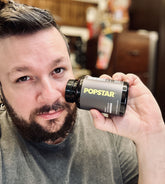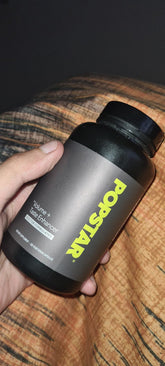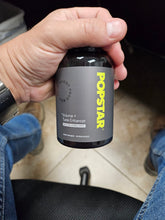Ball sucking, sometimes referred to as oral testicular stimulation, generally involves a partner applying gentle suction or oral contact to the scrotum for sexual pleasure. In men’s health conversations, this topic occasionally surfaces in the context of sexual wellness, intimacy, and safe practice. While it may be a form of foreplay or a standalone activity for some couples, understanding anatomy, hygiene, health-related factors, and precautionary measures is crucial to ensure both pleasure and safety. In this comprehensive guide, we’ll delve into the essential aspects of ball sucking, ranging from definition and technique to common myths, frequently asked questions, and how to communicate with your partner effectively. Our aim is to provide a balanced, NLP-friendly resource that is both educational and engaging.
Table of Contents
- Definition of Ball Sucking
- Anatomy and Physiology of the Scrotum
- Proper Hygiene Practices
- Potential Benefits and Risks
- Techniques for Safety and Pleasure
- Frequently Asked Questions
- Strategies for Communication and Comfort
- Myths and Misconceptions
- Common Variations and Alternatives
- Self-Care and Aftercare
- When to Consult a Professional
- Conclusion
Definition of Ball Sucking
Ball sucking is a colloquial term for oral stimulation of the scrotum and testicles, focusing on the use of the mouth, lips, and possibly the tongue. Despite its informal name, the practice can be explored in the broader scope of men’s sexual health and pleasure. The scrotum is rich in nerve endings, making it a sensitive area for many individuals. Gentle, consistent oral contact can elicit sensations ranging from mild pleasure to intense arousal if performed with care.
In healthcare or sex education contexts, ball sucking may be addressed under the umbrella of oral sexual practices. Because of the region’s delicacy, caution and proper technique are highlighted to ensure comfort and safety. Understanding the motivations behind the practice can range from curiosity and exploration to an enhancement of intimacy between partners. In short, ball sucking is not merely a casual concept but a practice that can be approached responsibly as part of a healthy sexual relationship.
Anatomy and Physiology of the Scrotum
The scrotum is a vital component of male reproductive anatomy, serving as a protective pouch that houses the testicles. This thin-skinned sac is designed to regulate temperature, which is critical for optimal sperm production. Typically, the scrotum remains a few degrees cooler than the rest of the body by hanging away from the torso. This temperature regulation process helps maintain healthy testicular function.
Key structures within the scrotum include:
- Testicles: Responsible for producing sperm and testosterone, the testicles are highly sensitive, containing numerous nerve receptors.
- Epididymis: Located on the back of each testicle, this coiled tube stores sperm.
- Spermatic Cord: These cords house blood vessels, nerves, and the vas deferens, all of which contribute to testicular health and hormone transport.
In the context of ball sucking, the nerve density and subtle temperature changes in the scrotum can lead to heightened arousal. Any sensation applied here—whether gentle biting, licking, or sucking—has the potential to produce pleasure if the individual is comfortable. However, because the area can be so sensitive, being mindful of pressure, moisture levels, and technique is critical. Excessive force or friction can cause discomfort or injury, emphasizing the importance of informed practice.
Proper Hygiene Practices
As with any form of sexual activity, hygiene plays a pivotal role in ball sucking. Cleanliness not only prevents the spread of bacteria and infections but also enhances comfort and confidence between partners. Some core hygiene considerations include:
- Showering or bathing beforehand: A simple shower ensures the removal of sweat and bacteria, paving the way for a more enjoyable and safer experience.
- Pubic hair maintenance: While personal preference varies, trimming or managing pubic hair can enhance comfort and reduce the risk of hair-related friction or accidental pulling.
- Oral hygiene: Brushing and flossing can reduce excessive bacteria in the mouth. This courtesy also makes the experience more pleasant for the receiving partner.
Beyond these common-sense measures, it is also prudent to use protection if there are concerns about sexually transmitted infections (STIs). Dental dams or condoms might be less common in scrotal stimulation, but in situations where one or both partners’ STI status is unknown, protective measures can minimize risks. Mutual clarity about sexual health history and open communication fosters a safer, more satisfying environment.
Potential Benefits and Risks
The primary benefit of ball sucking is the potential for pleasurable sensations stemming from testicular sensitivity. This type of stimulation can be a novel way to explore a partner’s erogenous zones. For many, trying new forms of intimacy can strengthen relationships by increasing trust, body awareness, and communication about sexual needs and boundaries.
However, like any sexual activity, there are potential risks:
- Discomfort or pain: Without proper lubrication or if too much pressure is applied, ball sucking can be painful.
- Injuries: Abrasions, cuts, or bruising could occur if enthusiasm overshadows gentleness or if teeth come into direct contact with sensitive skin.
- Infections: Oral bacteria and lack of scrotal cleanliness could lead to skin irritation or infections, especially if there are minor cuts in the mouth or on the scrotum.
Openly discussing boundaries and safe words can help mitigate these risks. If any significant pain or unusual symptoms persist after the act, consulting a healthcare professional is advisable. Like other forms of sexual engagement, moderation, clear communication, and cleanliness govern this activity’s success and satisfaction.
Techniques for Safety and Pleasure
Much of the success in oral testicular stimulation relies on finesse and an understanding of the scrotum’s sensitivity. To enhance pleasure while minimizing discomfort, consider the following steps or techniques:
- Start Slowly: Begin with gentle touches—lightly cupping the scrotum, kissing around the testicles, or using soft, warm breath. This gradual approach helps the recipient become accustomed to new sensations.
- Teasing Licks and Sucking: Once comfort is established, gentle suction can be used. Use lips to form a seal around a part of the scrotum; similar to a soft “kiss,” then slowly increase suction, but be mindful not to exceed a comfortable pressure level.
- Use the Tongue Strategically: Flicking or swirling the tongue around the scrotum can be very stimulating. Alternatively, consider a consistent, moderate pressure if the recipient enjoys steady contact.
- Pay Attention to Feedback: Nonverbal cues, such as moaning or tensing, can indicate whether the pressure is pleasurable or too intense. Encouraging verbal feedback can ensure alignment with comfort levels and preferences.
- Incorporate Hands: While performing oral stimulation, using one hand to support or gently massage the scrotum can distribute sensations and reduce excessive tugging.
- Experiment with Temperature: Warmth can feel soothing. However, some enjoy mild temperature play (like a cool beverage in the mouth beforehand). Always test the temperature carefully, as the testicles can be very sensitive.
Staying attentive to your partner’s reactions remains crucial. Communication—verbal or otherwise—lets you adapt your technique in real-time. Overall, safety and pleasure go hand in hand when both partners approach this practice thoughtfully.
Frequently Asked Questions About Ball Sucking
Is ball sucking safe for everyone?
Ball sucking can be safe when practiced carefully, but it isn’t necessarily comfortable or appealing to every individual. Factors like personal preference, sensitivity, health conditions, or even psychological comfort levels can hint whether it’s an enjoyable activity. Always approach with informed consent.
Can ball sucking increase the risk of testicular injury?
A gentle approach is largely safe, but any roughness or biting can irritate or injure the delicate scrotal skin and underlying structures. Maintaining proper technique, low-pressure suction, and open communication is the best way to avoid trauma.
What if I have sensitive testicles?
Sensitivity levels vary widely. If the testicles are already tender due to a medical issue (e.g., varicocele, epididymitis, or post-surgery), it is best to consult a healthcare professional before attempting any new form of stimulation. Communication with your partner about your comfort threshold is crucial.
Should we use lubrication?
While saliva can provide natural lubrication, some couples may choose an additional water-based lubricant for comfort. However, be sure the product is safe for oral contact if mouth-to-genital contact is expected. Always check the product label.
Are there STI concerns associated with ball sucking?
Like other forms of oral sex, unprotected ball sucking can carry some risk of STI transmission. Although the risk is lower than unprotected penetrative sex, there is still potential for infection if there are open cuts or if either partner has an undiagnosed condition. Using protection such as dental dams or specialized barriers can reduce these risks.
Do certain positions make ball sucking easier?
Comfortable positioning is key. The receiving partner might lie on their back, use pillows to support the hips, or stand with one leg elevated. Experimenting with different positions allows both partners to find an angle that provides maximum comfort and access.
Is it possible to combine ball sucking with other forms of stimulation?
Absolutely. Exploring penile stimulation or prostate massage simultaneously can enhance arousal. Light touches, handjobs, or even incorporating toys can create a more holistic experience. Always go slow when combining multiple forms of stimulation to assess overall comfort.
How do I talk to my partner about wanting to try it?
Open and honest communication paves the way. Consider mentioning it outside the bedroom, explaining what draws your interest in trying it. Emphasize that it’s an optional exploration for mutual enjoyment. Listening to your partner’s feedback, concerns, or boundaries is equally important.
Strategies for Communication and Comfort
Effective communication is the cornerstone of any satisfying and safe sexual practice. Because ball sucking may not be as commonly discussed as other sexual acts, clarity around preferences and limits reduces discomfort and awkwardness. Start by gently gauging interest:
- Share Curiosities: Express your genuine interest. A casual “I’m curious about ball sucking; what are your thoughts?” can break the ice.
- Set Boundaries from the Outset: Outline what feels exciting and what is off-limits. You might decide specific intensities of suction are allowed, while anything beyond a certain point is discouraged.
- Create a Safe Word or Signal: This is especially helpful if you’re exploring something new. If either person utters or signals the safe word, all activity should pause immediately.
Creating a relaxed environment can foster a stronger sense of security. Soft lighting, comfortable bedding or furniture, and the absence of distractions help direct focus to the act at hand. Additionally, positivity, verbal reassurance, and a willingness to adjust technique makes it easier to navigate novel sensations.
Myths and Misconceptions
In men’s health discussions, certain myths about ball sucking can inadvertently diminish its appeal or create erroneous assumptions. Here are a few misconceptions worth clarifying:
-
Myth 1: “It’s always painful.”
While the testicles are sensitive, proper technique and gentle handling can make the experience comfortable and enjoyable. -
Myth 2: “Only certain couples enjoy it.”
No specific demographic is the “primary” or sole group to incorporate this. It relies more on individual preferences than any broad stereotype. -
Myth 3: “There’s no risk of STI transmission.”
While ball sucking may carry a lower risk compared to other acts, there is no complete elimination of risk if performed unprotected. -
Myth 4: “Ball sucking replaces other forms of oral sex.”
In many intimate relationships, a variety of acts can coexist, each adding its own flavor of excitement.
Exchanging accurate information can help couples make informed choices. Myths often arise out of limited or skewed information, making open conversation about safe practices and realistic expectations essential.
Common Variations and Alternatives
Though ball sucking is one distinct element of scrotal or genital stimulation, partners sometimes incorporate complementary or alternative activities to enhance intimacy:
- Gentle Hand Massage: Massaging the scrotum with lubricated fingers can provide warmth and pressure without intense suction.
- Nipple Stimulation: Concurrent stimulation of other erogenous zones, like the nipples, can amplify overall arousal.
- Prostate Play: For those comfortable with anal stimulation, gentle pressure on the prostate may create powerful sensations when combined with scrotal play.
- Tantric Techniques: Slowing the pace while engaging in mindful breathing or eye contact might deepen the emotional and physical connection.
These alternatives can serve as expansions to conventional oral sex, granting a sense of novelty and discovery. For partnerships that want to explore male pleasure more comprehensively, combining or alternating among these variations might heighten the overall experience.
Self-Care and Aftercare
Aftercare underscores the importance of following up on a physically or emotionally intense encounter. Safe and positive experiences require ample attention once the act has ended:
- Hydration and Cleaning: Gently rinsing the area and hydrating both orally (drinking water) and topically (re-moisturizing the skin if necessary) can prevent dryness or irritation.
- Check for Discomfort: Assess whether any skin redness, pain, or bruising occurred during the activity. If there’s ongoing soreness, consider next steps such as cold compresses or medical consultation.
- Discuss Emotional Experiences: Sexual activities can sometimes trigger unexpected emotional responses. Sharing how you felt can nurture understanding and trust.
Aftercare isn’t limited to elaborate rituals. A simple cuddle, open conversation, or gentle reassurance about comfort levels can be enough. Empathy and attentiveness towards your partner help foster positive associations and encourage further exploration.
When to Consult a Professional
Generally, ball sucking is a benign practice if approached responsibly. However, certain scenarios call for professional guidance:
- Pre-Existing Conditions: Men with previous testicular injuries, infections, or surgeries should discuss potential risks with a healthcare provider before trying new forms of testicular stimulation.
- Persistent Pain or Swelling: If you experience recurrent pain, lumps, or swelling, an examination by a urologist or primary care physician is warranted to rule out underlying issues.
- Sexual Dysfunctions: If incorporating ball sucking is part of addressing broader erection or desire problems, consulting a sex therapist can provide tailored advice.
- Psychological Discomfort: Anxiety or distress connected to exploring new sexual practices can be addressed with therapy or counseling specializing in sexual wellness.
Overall, a qualified health professional can address specific medical questions, guide safer approaches, and alleviate concerns related to male sexual health. It’s important to recognize that sexuality is multidimensional, blending physical, emotional, and psychological aspects that sometimes require external support or advice.
Conclusion
Ball sucking is an adult sexual practice that revolves around testicular and scrotal stimulation. Despite its casual label, the act encompasses a number of considerations that extend beyond mere technique—ranging from anatomy and physiology to hygiene, communication, and risk management. For some individuals, it may offer a pathway to enhanced pleasure and relationship intimacy. For others, it may hold limited appeal based on personal preference or underlying health conditions. Ultimately, safe and rewarding explorations of ball sucking rely on a foundation of shared respect, consent, attention to comfort, and dialogue about boundaries.
Incorporating trusted health resources, professional advice, and open communication with partners helps mitigate potential risks and enrich the pleasurable aspects. As part of the broader spectrum of men’s sexual health practices, ball sucking can be seen not only as a physical act but also as a means of connecting with one’s partner on a deeper emotional and intimate level. With proper knowledge and care, it can become a safe, satisfying addition to a couple’s sexual repertoire.
References
- American Sexual Health Association. (2021). Oral Sex and Sexual Health.
- Centers for Disease Control and Prevention (CDC). (2022). Sexually Transmitted Infections Treatment Guidelines.
- National Institute of Diabetes and Digestive and Kidney Diseases. (2017). Male Reproductive Anatomy.
- Cleveland Clinic. (2021). Scrotum and Testicle Health.
- World Association for Sexual Health. (2020). Sexual Health and Pleasure: Guidelines.




















































